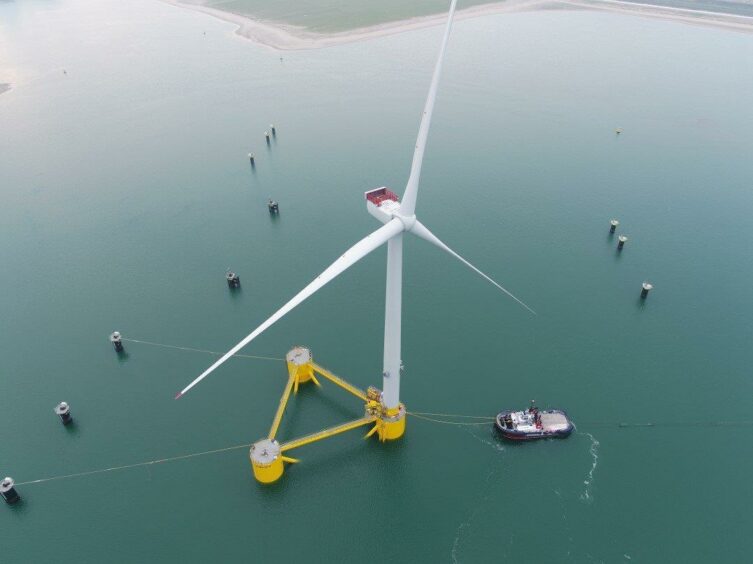
Momentum is building within the UK’s energy sector and the blue economy.
Following a period of change and uncertainty, it is clear now the transition to clean and renewable energy is offering new opportunities both in our domestic market and in our export markets.
Last month, the ScotWind licensing round announcement gave tremendous hope for the future as it adapts and reshapes itself in the 2020s.
This was the first Scottish offshore wind leasing round in over a decade and supports the vast opportunity Scotland has to transform its energy market and move towards a net zero economy.
It is hugely encouraging to see that many of the successful ScotWind applicants are large global organisations traditionally associated with oil and gas.
The fact that organisations such as BP, Shell and TotalEnergies are committing a future in wind power demonstrates their strategic intentions in transitioning to renewable energy.
It also demonstrates their commitment to maintaining their ongoing presence in the UK.
The 17 projects selected for ScotWind have a total capacity of up to 24GW.
This is massive – Scotland only needs around 5GW – and provides plenty of potential to support ongoing electrification efforts and maybe even the export of power.
For the energy sector, ScotWind will give comfort throughout much of the supply chain that there is a revival of stimulus and longevity of commitment in the blue economy, instilling confidence to new R&D initiatives which opens the doors to innovation and new opportunities.
This offers the supply chain what could be opportunity to capitalise on an offshore wind boom.
An interesting observation to be made is that at least 10 of 17 ScotWind projects are for floating wind power.
Scotland is already a world leader in floating wind, hosting the world’s first floating wind farm and the world’s largest, Kincardine, with a capacity of 50MW.
To really harness the potential of wind power around the world, turbines will need to be bigger and will be positioned further offshore where there is the most wind energy.
ScotWind will be a catalyst for Scotland to extend its global lead in floating wind.
This not only offers a significant opportunity to our domestic supply chain, it also offers the prospect to dominate the international export of skills, technologies and businesses in this specialist area.
In the North Sea, this is a familiar model traditionally experienced in the oil and gas sector and so this could come as a welcome opening throughout the energy sector.
In our own client base at AAB, we have already been seeing significant changes for some time where companies in the traditional oil and gas supply chain have been making the transition to supporting renewables.
Arguably, one of the most promising sectors is subsea, where skills and technology are highly transferable in the offshore marine environment and blue economy.
Some clients have, for example, successfully exported their businesses to include large wind energy regional hubs such as East Coast USA and Taiwan.
Strategic industry bodies such as the Global Underwater Hub (GUH), and organisations such as the Energy Transition Zone (ETZ), are working hard to foster new opportunities, including the promotion and facilitation of skills and technology transfer.
Later this month, Subsea Expo, organised by the GUH, will take place in Aberdeen.
The theme of the three-day event is “Oceans of Opportunity – harnessing the Opportunities in the Blue Economy”.
This is a particularly apt title that illustrates the prize available to the UK’s underwater engineering industry and energy sector to capitalise on the global blue economy, estimated by the GUH to be worth $3 trillion by 2030.
All of this offers a very welcome boost to the energy sector, the wider blue economy supply chain and to the UK.
It demonstrates the sheer dynamism, possibilities and ongoing high value of our exciting energy sector.
Neil Dinnes is a Partner and Head of Corporate & International Tax at Anderson Anderson & Brown (AAB)
Recommended for you

 © Supplied by Anderson Anderson &
© Supplied by Anderson Anderson &